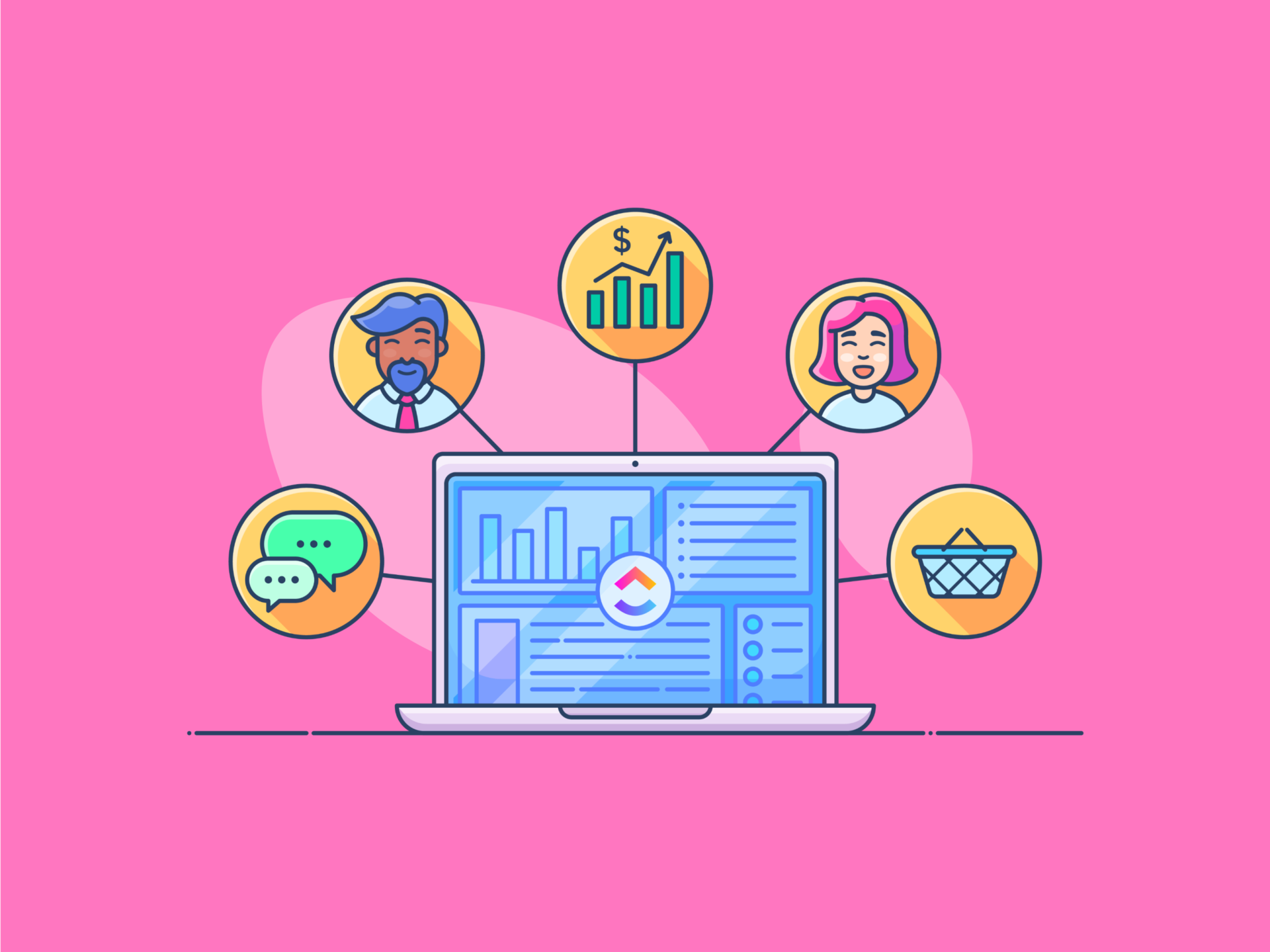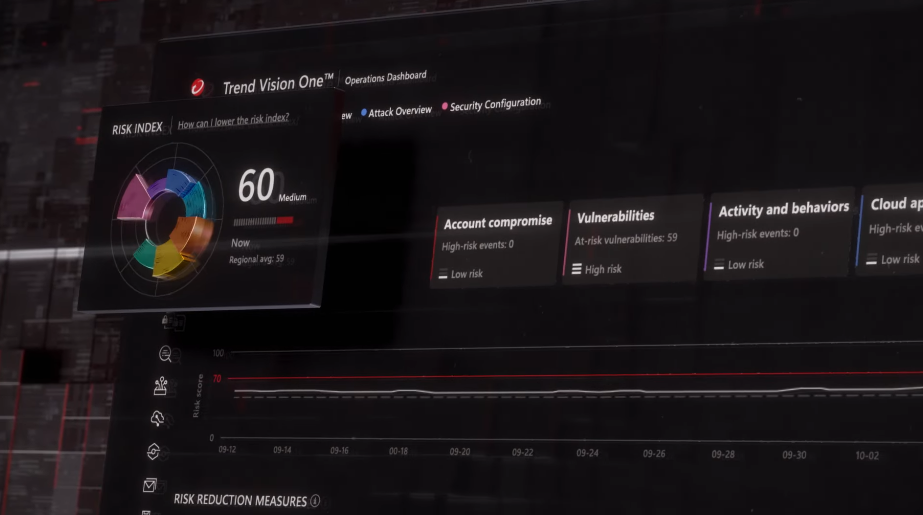“Did I already email this candidate? Or was that for the other role?”
If you’ve asked yourself that mid-scroll through a spreadsheet, you know you’re living the recruiter life.
HR teams—especially during hiring sprints—often juggle dozens of resumes, email threads, and interview notes. It’s no wonder things get messy fast. That’s precisely why creating a recruitment database is your backstage pass to organized hiring.
The proper setup keeps candidate info in one place, helps you spot the best fit quickly, and brings consistency to your process (goodbye sticky notes).
In this blog, we’ll walk you through how to build a database that makes tracking applicants feel less like herding cats and more like running a well-oiled hiring machine.
No more fishing for important candidate data across multiple job boards. ✋🏽
How to Create a Recruitment Database for HR Teams?
What Is a Recruitment Database?
A recruitment database is a centralized place where HR teams can store and manage information related to jobs, applicants, and contacts. It helps organize candidate data based on specific filters, such as skills, experience, or qualifications, making finding the right fit for any role easier.
A recruitment database’s primary purpose is to streamline the hiring process. It allows recruiters to track applications, monitor communication, and stay on top of every candidate’s journey. Instead of juggling spreadsheets or scattered notes, teams can work from a single source of truth.
A recruitment database simplifies how hiring data is stored and accessed, helping recruiters make faster, more informed decisions—ultimately improving hiring efficiency and candidate experience.
⭐ Featured template
The Recruitment Action Plan Template is a customizable framework designed to streamline your hiring process. It features custom statuses (like Open, In Progress, Not A Fit), Custom Fields for tracking candidate details, and multiple views to organize applications by role or stage.
With built-in automation, task dependencies, and time tracking, the template helps teams efficiently manage every step—from sourcing candidates to onboarding—while allowing you to adapt lists, fields, and workflows to fit your unique recruitment needs.
Benefits of Using a Centralized Database for Hiring
A well-organized recruitment database helps you move faster and work better as a team. When all your hiring info is in one place, you cut down on confusion, make sharper decisions, and keep everyone on the same page.
Here’s what you can actually do once your data’s all in one spot:
- Eliminate scattered data by using a central source for job listings, hiring procedures, and applicant tracking
- Refine candidate matching with clear job requirements and targeted search filters
- Speed up recruitment with a shared repository, standardized screening steps, and automated communication
- Improve collaboration by sharing interview notes and progress updates with recruiting managers
- Optimize your hiring strategy or staffing plan by tracking key metrics like cost per hire and time to hire, and identifying the most effective sourcing channels
👀 Did You Know? Nearly four in five employers globally report difficulty finding the skilled talent they need. This highlights the critical importance of recruitment skills in addressing talent shortages effectively and ensuring organizations can attract and retain the right candidates.
Key Elements of a Recruitment Database
Think of your recruitment database as a library where every book (candidate) is perfectly categorized, tagged, and ready to be found at a moment’s notice. When built correctly, this system becomes your hiring team’s most valuable asset—but what exactly goes into making it work?
A recruiting database requires several core components to function effectively:
- Candidate profiles: Comprehensive records containing contact details, work history, skills, and qualifications for each applicant
- Job requisitions: Detailed descriptions of open positions, including requirements, responsibilities, and hiring criteria
- Application tracking: Organized tracking of each candidate’s journey through the hiring pipeline, from application to final decision
- Communication logs: Documented interactions with candidates, including emails, phone calls, and interview feedback
- Search functionality: Advanced tools to filter candidates using multiple parameters for faster matching
- Data security measures: Safeguards to keep candidate information confidential and compliant with privacy regulations
- Reporting capabilities: Built-in tools to analyze hiring data and uncover valuable insights for improving recruitment strategies
These building blocks create a foundation for successful recruitment, but the magic happens when you intentionally put them together. Let’s walk through how to construct your database from the ground up, step-by-step.


🧠 Fun Fact: In a creative twist on recruitment campaigns, Volkswagen Group embedded secret job invitations within faulty car parts. They sent vehicles with these modified parts to competitor service centers, where mechanics would discover QR codes leading to Volkswagen’s career page. This inventive approach resulted in over 113,000 visits to their careers website and 53,705 new CV submissions.
Steps to Create a Recruitment Database
This is a handy guide for how you can take your database for recruitment from idea to implementation:
1. Choose the right database tool
Recruitment database software is your cheat sheet for building a smart, scalable database from scratch. However, selecting the appropriate platform will depend on your organization’s size, complexity, and budget.
For smaller organizations or teams, spreadsheet applications like Excel or Google Sheets can serve as entry-level solutions.
As your hiring needs grow, though, dedicated recruitment tools become essential.
Look for a recruitment database software that offers scalability, customization options, and integration capabilities within your existing HR systems.
💡 Pro Tip: Setting clear recruitment goals is the first step to building a high-performing hiring strategy. Whether you’re aiming to reduce time-to-hire, increase offer acceptance rates, or improve candidate experience, aligning your recruitment database with these goals ensures every action supports a measurable outcome.
2. Define data fields and categories
Creating an effective database structure requires thoughtful consideration of what information you’ll need to store and retrieve.
Start by identifying the essential candidate data fields:
| Category | Details |
| Basic information | Name, email, phone number |
| Education | Degrees, institutions, graduation dates |
| Work experience | Companies, job titles, tenure, key achievements |
| Skills and certifications | Technical skills, languages, professional certifications |
| Recruitment stage | Applied, screened, interviewed, offered, hired, rejected |
| Source of application | Job board, referral, social media, recruiting agency |
| Technical skills, languages, and professional certifications | Interview dates, follow-ups, feedback |
| Documents | Resume, cover letter, portfolio links |
| Salary and availability | Expected salary, availability, start date |
With , you can build multiple different Custom Fields to track every detail—from interview stages and candidate contact info to important deadlines. You can also sort and filter these fields to quickly access the exact data you need.


Organize these fields into logical categories that align with your recruitment workflow. This structure will make it easier to input, update, and search for information later.
3. Collect and store candidate information
With your data structure mapped out, it’s time to consider how you’ll collect all that valuable candidate information. Your methods will impact the quality and quantity of data in your system.
Developing standardized processes for gathering candidate data ensures consistency and completeness. Structured application forms that capture all necessary information while remaining user-friendly. Remember that overly complex forms can discourage potential applicants.
Consider these methods for collecting candidate information:
- Online application forms with required fields
- Resume parsing tools to extract data automatically
- LinkedIn profile imports
- Candidate questionnaires for additional screening
- Referral submission forms for employee recommendations
As you collect this information, establish clear governance around data entry. Define who can add or modify records and create guidelines for formatting and standardization to maintain database integrity.
Be sure to follow data protection standards like GDPR (General Data Protection Regulation) when collecting and storing personal information.
Tools like Forms lets you collect, process, and analyze data seamlessly without needing a separate app! It offers customizable questions, workflow integration, easy sharing, and enhanced security with GDPR and CCPA compliance.


👀 Did You Know: Automating repetitive tasks can save recruiters up to six hours per week. That’s one whole afternoon freed up for less admin and more people stuff.
4. Implement a search and filter system
The true value of your recruitment database emerges when you can quickly identify suitable candidates for open positions.
Design your search capabilities to include:
- Keyword search across all text fields
- Filtering by qualifications, experience levels, location, application status, and skills
- Boolean search options (AND, OR, NOT) for complex queries
- Saved search templates for frequently used criteria
- Sorting capabilities based on relevance or other factors like scorecards or interview feedback
Test your search system with realistic scenarios to ensure it returns accurate results. For instance:
- Can you find all candidates with specific technical skills and experience levels?
- Are you able to identify previous applicants who might fit a newly opened position?
HR professionals can efficiently organize, track, and analyze candidate information by implementing a robust search and filter system within ’s List View.


5. Maintain and update the database regularly
You wouldn’t leave your email inbox unmanaged for months. Your database deserves the same attention. Regular upkeep keeps it accurate and valuable.
A recruitment database isn’t a “set it and forget it” project. It must be continuously updated to reflect real-time changes in your hiring pipeline.
A stale database won’t help anyone. Make it a habit to:
- Schedule regular data audits to identify and correct errors
- Create automated prompts for updating candidate information
- Establish a process for archiving inactive candidates after a defined period
- Document database management procedures for consistency
- Track database performance metrics like search accuracy and user satisfaction
- Collect feedback from recruiters about usability issues or missing features
Regular maintenance ensures your database remains a reliable resource for hiring decisions and protects against data degradation over time.
📮 Insight: 18% of our survey respondents want to use AI to organize their lives through calendars, tasks, and reminders. Another 15% want AI to handle routine tasks and administrative work.
To do this, an AI needs to be able to: understand the priority levels for each task in a workflow, run the necessary steps to create tasks or adjust tasks, and set up automated workflows. Most tools have one or two of these steps worked out.
However, has helped users consolidate up to 5+ apps using our platform!
Experience AI-powered scheduling, where tasks and meetings can be easily allocated to open slots in your calendar based on priority levels. You can also set up custom automation rules via Brain to handle routine tasks. Say goodbye to busy work!
There’s no shortage of tools to help you build a recruitment database system, from simple spreadsheets to sophisticated HR software or recruitment CRM solutions. Choosing the right one depends on your team size, hiring volume, and growth plans.
Let’s explore some popular options.
Spreadsheets: Excel, Google Sheets (for small-scale tracking)
For small businesses or teams with minimal hiring needs, spreadsheet applications offer a starting point for candidate tracking.
Spreadsheets can be appealing because of their familiarity and low barrier to entry. Many recruiters start here because they already know how to use Excel or Google Sheets. These tools provide basic functionality that might be sufficient when handling just a few positions and potential candidates at a time.
But these aren’t dedicated tools to build your recruitment tech stack. They have multiple limitations:
- Requires manual data entry, prone to errors
- Has limited search capabilities for large datasets
- No automated workflows or notifications
- Challenging to maintain with multiple users
- Minimal compliance and security features
- No integration with email or calendar systems
- Difficult to scale as hiring needs grow
Most growing organizations quickly outgrow spreadsheets as their recruitment needs become more complex. This is where solutions like applicant tracking systems and specialized HR recruitment software come into play.
ATS and HR software
When your hiring volume increases or your recruitment processes become more sophisticated, you need a more dynamic system that transforms how your team identifies and engages with talent.
Dedicated applicant tracking systems (ATS) and HR recruitment database software provide comprehensive functionality with advanced search features to select qualified candidates.
These specialized platforms are designed specifically for recruitment needs. They offer streamlined workflows, automation for data accuracy, and integration capabilities that can dramatically improve hiring efficiency.
And you have several options you can choose from, like
- Workday Recruiting: Enterprise-level solution with robust reporting and analytics
- Greenhouse: User-friendly interface with structured interview capabilities
- Lever: Strong candidate relationship management features
- BambooHR: All-in-one HR platform with integrated recruitment tools
However, the most popular option for HR has to be because of its customizable project management platform that is adaptable to recruitment needs.


If you’ve ever wished for a recruitment tool that adapts to your needs instead of forcing you to change your workflows, is the answer to your needs.
Unlike rigid traditional ATS systems, provides a flexible foundation that you can shape to match your exact recruitment needs, whether you’re a solo recruiter or part of a large HR department.
The for HR Teams tool suite transforms how teams handle talent acquisition by providing a comprehensive workspace that adapts to your unique hiring processes. The solution helps organizations track candidates through every stage of recruitment, from initial application to final decision.
Track every phase easily with Custom Views and Statuses
With Custom Statuses for each recruitment phase, everything from attaching relevant documents to automating follow-ups becomes a lot smoother.


Here’s how you can leverage for HR teams:
- Create custom pipelines to track candidates through different hiring stages
- Set up automated notifications for interview scheduling and follow-ups
- Build custom forms to standardize application collection and evaluation
- Use templates to create new job requisitions with standardized information quickly
- Collaborate with hiring managers through comments and shared documents
- Track recruitment metrics with custom dashboards and reporting tools
Break the process down into smaller tasks and ensure timely follow-ups
What really sets apart is how it integrates task management with database functionality. Instead of just storing candidate information, lets you turn the data into actionable items, directly.
Turn a promising application into an interview with Tasks. Assign reviewers to specific candidates and track the entire process in a visual pipeline. This integration eliminates the need to switch between different systems, saving valuable time for busy recruiters.


When it’s time for evaluation, recruiters can create standardized interview scorecards using Slash Commands for rich text formatting directly in task descriptions, providing a consistent framework for assessing all applicants.
Automations handles repetitive tasks that would otherwise consume hours of your week. With it, you can also set up workflows that automatically move candidates to different stages based on specific triggers, send customized email templates for follow-ups, and even generate reports on your recruitment metrics.


These automations not only save time but also ensure consistency in your hiring process.
Stay on top of hiring insights and trends
Want to find a visual overview of your entire recruitment operations? Dashboards allow you to monitor key metrics like time-to-fill, source effectiveness, and pipeline health at a glance.


Next, ’s Calendar View gives your team a clear, visual timeline of the entire recruitment process. You can schedule interviews straight from tasks and sync everything to external calendars—so everyone stays in the loop, even on the move.
also offers several helpful templates to simplify hiring. One example is the Hiring Selection Matrix Template, which makes it easy to screen candidates and organize top talent without creating a new system from scratch.
Unify your recruitment tech stack using one super app
Need to bring your favorite tools along for the ride? ’s integrations have you covered. You can connect it with what your team already uses—like Google Drive, so resumes and offer letters stored there can be attached right to tasks—no more digging through folders.
Whether syncing emails to track conversations, using your calendar to schedule interviews, or pulling in data from a CRM, can become your go-to spot for managing all things recruitment.
With integrations like Recruit CRM via Zapier, makes hiring workflows more efficient. New jobs added in Recruit CRM can trigger actions in , so you can manage postings and applications without missing a beat.


Pair that with the Smart Job Board and Zapier, and you can publish openings across numerous job boards in one go. It’s a faster, more connected way to keep your hiring team on the same page.
Here’s what Soumya Venugopal, Senior Manager, HR, WazirX, says about ’s recruitment management capabilities:
Tips for Efficient Database Management
Now that you know how to create a recruitment database, let’s tell you how to optimize it. When you stick to the following best practices, your database doesn’t just stay organized—it actually gets more valuable and effective the longer you use it.
- Standardize data entry protocols: Create clear guidelines for entering information to maintain consistency
- Implement data validation: Use dropdowns, required fields, and formatting rules to minimize errors
- Create candidate tagging systems: Apply consistent tags for skills, experience level, and role fit
- Establish privacy controls: Restrict access to sensitive data and stay compliant with regulations
- Develop a candidate scoring system: Use objective criteria to evaluate and compare applicants
- Build automated workflows: Set reminders for follow-ups and talent pipeline check-ins
- Set up regular backup procedures: Schedule backups and define recovery protocols
- Document your database structure: Keep a clear record of fields, categories, and search filters
- Integrate with other HR systems: Connect to onboarding and employee management tools
- Clean up duplicate entries regularly: Identify and merge duplicates to maintain data accuracy
Future-Proof Your Hiring: Building Tomorrow’s Talent Pipeline with
If hiring still feels like a scramble, it doesn’t have to. With the proper setup, you can shift from putting out fires to building a solid, proactive recruitment system—and is built to help you do exactly that.
Its flexible structure lets you organize candidates into Spaces, Folders, and Lists, so everything stays neat and searchable. Custom Fields allow you to track exactly what matters—skills, experience, application status—while powerful filters and search tools help you find the right person faster.
Toss in automation for repetitive tasks like status updates and interview prep, and you have a system that complements your recruitment style. Ready to give your hiring process a serious upgrade?
✅ Try for free and get started today.


Everything you need to stay organized and get work done.











